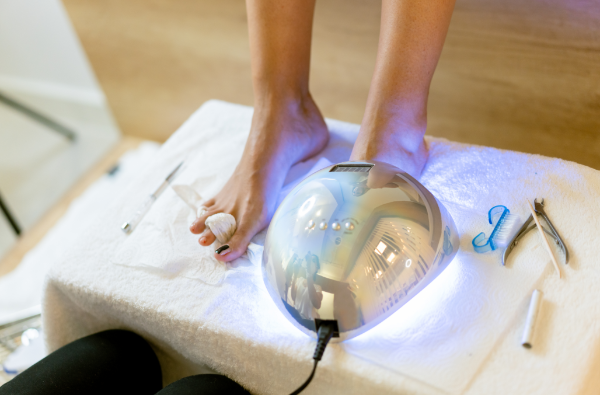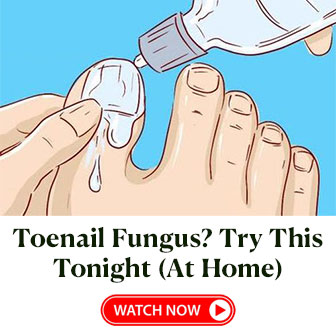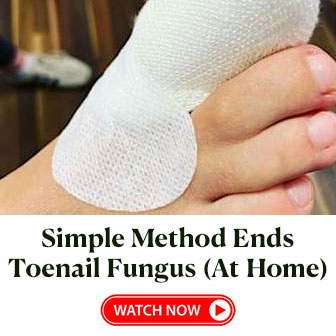UV Light For Toenail Fungus: Fast & Safe Solution
Contents

Toenail fungus, medically known as onychomycosis, is a common and stubborn condition that affects millions of people worldwide.
Characterized by discolored, thickened, and brittle nails, toenail fungus can cause discomfort and self-consciousness. Fortunately, modern treatments have brought new hope to those dealing with this issue, one of which is the use of UV light therapy.
In this post, we’ll explore how UV light for toenail fungus works, its benefits, and why it’s becoming a preferred treatment option for many.
What is Toenail Fungus?
Toenail fungus is a fungal infection that typically begins as a small white or yellow spot under the tip of the toenail. If left untreated, it can spread and cause significant damage to the nail.
The fungus thrives in warm, moist environments like those found in shoes, public swimming pools, and showers.
The infection may result in nail discoloration, thickening, crumbling, and even separation of the nail from the nail bed in severe cases.
While there are various treatment options available, ranging from topical antifungal creams to oral medications, many people are seeking alternatives due to side effects, ineffectiveness, or the need for long treatment periods.
UV light therapy has emerged as a promising solution that offers convenience and effectiveness with minimal side effects.
Understanding UV Light Therapy
Ultraviolet (UV) light is a type of electromagnetic radiation. UV light has been widely used for disinfection and sterilization purposes due to its ability to kill or inactivate microorganisms, including bacteria and fungi.
When it comes to toenail fungus, UV light, particularly UV-C light, can penetrate the fungal cells and disrupt their DNA, ultimately preventing their growth and reproduction.
UV light therapy for toenail fungus uses specially designed devices that emit UV-C light to target the infected area.
The treatment is non-invasive, requires no medications, and can be performed in the comfort of your home or at a medical facility.
How Does UV Light Work for Toenail Fungus?
UV light therapy works by targeting the fungus beneath the toenail and disrupting its cellular structure. The UV-C light emitted by the treatment device is absorbed by the fungal cells, causing damage to their DNA.
This prevents the cells from multiplying, and over time, the fungus is killed or inhibited, allowing the healthy tissue to regenerate.
For toenail fungus, UV light can penetrate the nail plate and reach the infected tissue beneath it.
Unlike oral medications or topical treatments, which may struggle to penetrate the nail, UV light therapy directly targets the source of the infection, making it a more efficient treatment option.
Benefits of UV Light for Toenail Fungus
Non-invasive and Painless
One of the most appealing aspects of UV light therapy is that it is non-invasive. There is no need for surgical intervention, no need for oral medications, and no need for potentially harsh topical creams. The treatment is painless and does not involve any needles or cuts, making it ideal for individuals who are averse to more invasive procedures.
Effective and Targeted
UV light therapy directly targets the fungal infection by penetrating the nail and reaching the affected tissue. This targeted approach makes it more effective than topical treatments, which may struggle to penetrate the nail’s hard surface. It also reduces the need for prolonged treatment periods, unlike oral medications, which can take weeks or even months to show results.
Convenience and Accessibility
UV light therapy can be performed at home using portable, FDA-approved devices. This makes it a convenient treatment option, as you don’t have to make frequent trips to a clinic or dermatologist’s office. Additionally, UV light therapy is often less expensive in the long run compared to prolonged oral medication or continuous use of over-the-counter antifungal creams.
Prevention of Future Infections
In addition to treating active fungal infections, UV light therapy can help prevent future infections. By killing or inhibiting the growth of the fungus, UV light treatment can reduce the chances of re-infection. Moreover, UV light can help kill fungi in shoes and socks, reducing the risk of the fungus spreading to other parts of the body or other people.
How to Use It for Toenail Fungus?
The process of using UV light therapy for toenail fungus is simple. Depending on the device you’re using, the procedure may vary slightly, but the general steps are as follows
Preparation
Before beginning treatment, it’s important to clean your feet and nails thoroughly. This ensures that the UV light can penetrate the nail and reach the fungal infection beneath. Dry your feet completely to avoid any moisture that could hinder the treatment.
Use the UV Light Device
Place the UV light device over the affected toenail or toenails. Most devices are handheld and emit UV-C light in pulses. You’ll need to keep the device in place for a few minutes, as directed by the manufacturer. During this time, the UV light will penetrate the nail and target the fungal infection.
Repeat the Treatment
For optimal results, UV light therapy should be repeated regularly, typically several times a week. Treatment duration and frequency will vary depending on the severity of the infection and the device being used. It’s important to follow the manufacturer’s instructions to achieve the best results.
Maintain Nail Hygiene
In addition to using UV light therapy, maintaining good nail hygiene is essential for preventing future fungal infections. Keep your feet clean and dry, wear breathable shoes, and change socks regularly to reduce moisture buildup.
Is UV Light Therapy Effective for Toenail Fungus?
UV light therapy has shown promising results in treating toenail fungus, with numerous studies supporting its efficacy.
In clinical trials, UV-C light has been found to reduce the fungal load in infected nails and promote the growth of healthy tissue.
Many individuals who have used UV light therapy report improvements in the appearance of their nails, including reduced discoloration, less thickening, and overall nail health improvement.
However, it’s important to note that results can vary depending on the severity of the infection, the device used, and how regularly the treatment is applied.
In some cases, a combination of treatments, including UV light therapy and antifungal creams, may be recommended for more stubborn infections.
If you’re struggling with toenail fungus and seeking a safe, effective, and non-invasive solution, UV light therapy may be the answer.
With its ability to directly target the infection, minimal side effects, and convenience, it offers a modern and promising approach to treating toenail fungus.
UV light for toenail fungus is a game-changer in the world of foot care. Whether you’re looking for an alternative to oral medications or simply want a hassle-free way to treat your fungal infection, UV light therapy offers a cutting-edge solution for healthier, fungus-free nails.



